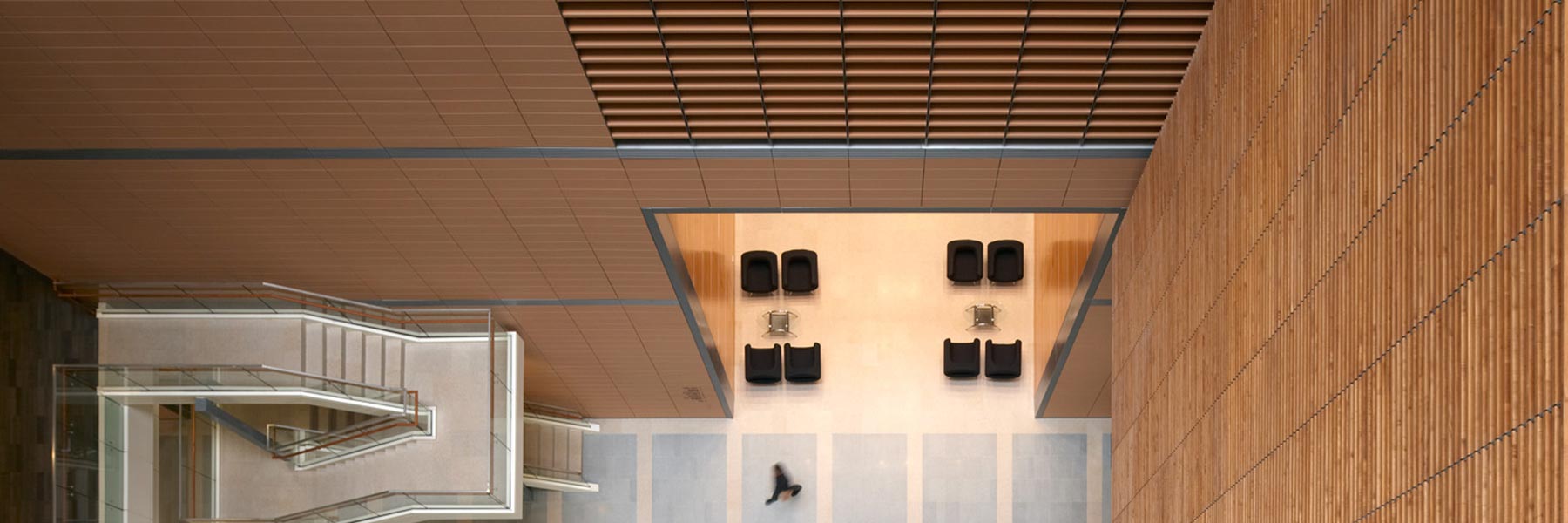Estimated reading time: 3 min
RMJM spoke to Tania Barney, Director of Vitality Consultancy Services, about three key components to consider if you want to design for wellbeing

Tania Barney
Wellbeing has been among the most talked about design trends of recent years. More and more, architects and interior designers are creating spaces which combine physical factors, such as how buildings are structured, with ecological elements, like the presence of daylight. When combined, these aspects can help to both stimulate and nurture productivity in end users.
RMJM spoke with Tania Barney, the Director of Vitality Consultancy Services and an expert on how to design for wellbeing, about the most important facets of wellness design. Use the following factors and tips to create optimal environments which not only vitalise, but care for the people who will eventually inhabit them.
Read the original article here, or continue below for our summary of Tania’s tips.
Comfort
When it comes to designing for wellbeing, aim to create a built environment which offers both physical and mental comfort. By meaning, the word ‘comfort’ comes from the late-Latin word ‘confortate’, which translates to ‘strengthen’. In design terms, this can be done by creating something comfortable and stimulating for people’s mental and physical health. Remember, though, what we see as comfort differs from person to person, so keep the building’s overall purpose and demographic in mind for a more tailored approach.
Lighting
Designers also need to avoid sensory overloading — particularly from factors which come in from the immediate world around us, such as lighting and noise — when creating public spaces like offices, hospitals or educational buildings. Lighting, in particular, is an environmental factor which can negatively impact an individual, as is often the case when fluorescent lighting is used.
The way the brain is wired means that we can follow some general rules about how to use lighting to calm and relax end users. Implement designs with minimal visual stimulation and, in turn, low lighting levels. When combined, this can make for a far more comfortable aesthetic environment.
Noise
Noise is another environmental factor which can be decisive when designing for wellbeing. When not controlled, it can cause stress and sensory overload, so it’s important to take external noise sources into consideration throughout the design process. Once the space is active, playing soft, familiar sounds can be beneficial to wellbeing, so long as the volume is kept low. Alternatively, it can also help to play slow (around 40 to 60 beats per minute), rhythmical music, as this has been proven to relax people, while simultaneously decreasing stress levels.
Here at RMJM, designing for people and places is paramount in all the work we do as a firm. Wellbeing in design helps to convey an important message — that architecture can be used as a force for good, one which creates spaces which are not only beautiful and sustainable, but healthy for end users.
If you enjoyed this post, why not read more on Tania’s thoughts on designing for productivity or designing for the senses?
The original interview was part of a series with Tania Barney, who was previously the Director at Sensory Intelligence Consulting and is now the Director of Vitality Consultancy Services.



One Comment